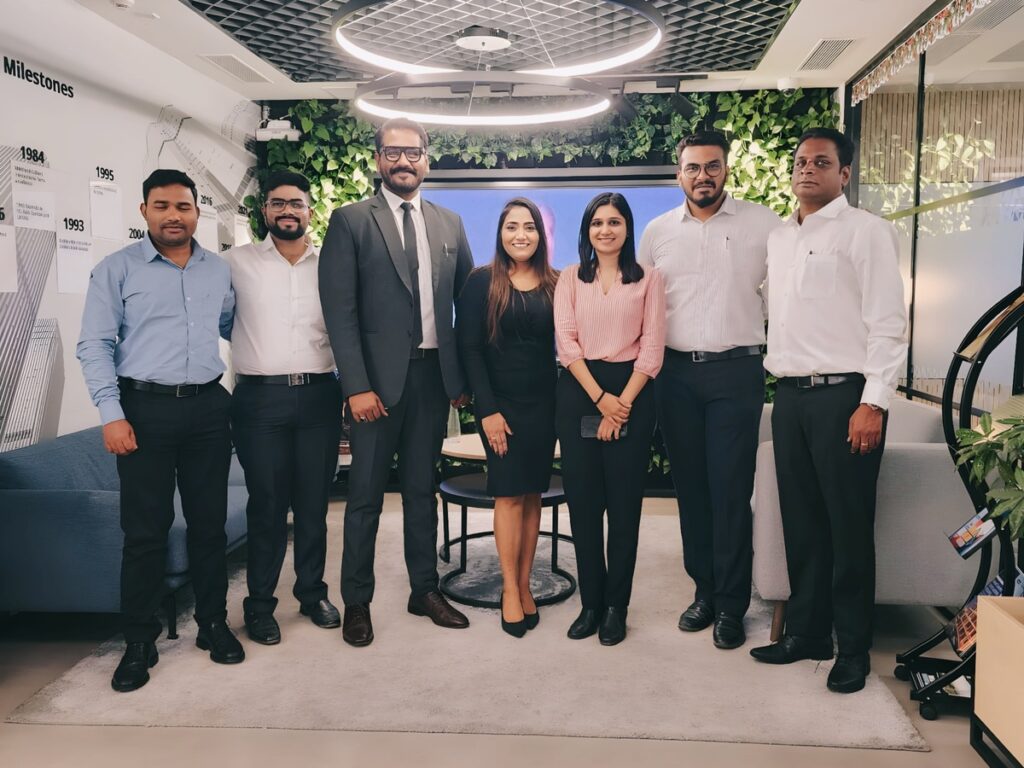Business
Cutting-edge tech fuels India’s logistics metamorphosis
Published
2 months agoon

The logistics sector in India is poised for substantial growth, with projections reaching USD 484.43 billion by 2029, as indicated in a report unveiled at the LogiMAT India 2024 fair. However, technology is playing key role in last mile connectivity in India. The Indian government and private players both are trying best to introduce new technologies for the betterment of Logistics sector.
In a compelling conversation with Neeraj Tiwari, correspondent for Marksmen Daily, Siddharth Shetty, Senior Associate Director and City Head at Colliers International, delves into the transformative impact of advanced technologies on India’s supply chain and logistics sector. Shetty sheds light on how AI, IoT, digital platforms, and infrastructural enhancements are fostering efficiency, transparency, and cost reduction within the industry.
How has the adoption of advanced technologies like AI and IoT improved efficiency in India’s supply chain and logistics sector?
Advanced technologies like AI and IoT have significantly revolutionised India’s supply chain and logistics sector. AI enhances demand forecasting by analysing vast datasets to uncover hidden patterns. It improves visibility and traceability, allowing real-time tracking of supplies across the logistics network. For example, AI can optimise shipping routes by monitoring weather and traffic conditions, thereby reducing delays.
In the cement industry, IoT-enabled asset tracking offers real-time insights into the condition and performance of vehicles and equipment. AI-powered predictive maintenance systems forecast failures and suggest repairs to prevent unplanned downtime. Together, AI and IoT optimised processes, reduce costs, and enhance resilience against disruptions.
In what ways have digital platforms and e-commerce influenced the management and optimisation of supply chains in India?
Digital platforms and e-commerce have profoundly impacted supply chain management and optimisation:
- Enhanced Efficiency: E-commerce platforms enable real-time tracking of orders, deliveries, and inventories, improving operational efficiency through better communication and transparency. For instance, Flipkart’s automated warehouse management system reduced order processing time by 70% and increased storage capacity by 30%.
- Data-Driven Decisions: Businesses can collect and analyse large volumes of data for better decision-making in demand forecasting and inventory management. Amazon’s predictive analytics optimize inventory levels, reducing costs and improving delivery times.
- Technology Integration: Technologies like AI and machine learning enhance operational effectiveness and cost efficiency. Delivery’s AI-powered logistics reduced delivery times by 25% and costs by 15%.
- Market Expansion: E-commerce platforms expand market reach by connecting businesses with customers beyond traditional boundaries. Paytm Mall’s partnership with local kirana stores extended its reach to rural areas, boosting sales.
How are real-time tracking systems and GPS technology enhancing transparency and reducing delays in India’s logistics operations?
Real-time tracking systems and GPS technology provide accurate, up-to-date information on the location and status of goods, enabling better operational decisions. They help optimize routes and schedules, reduce idle time and fuel consumption, mitigate theft and loss risks through alerts, and improve overall supply chain efficiency. These technologies also enhance customer satisfaction by providing accurate shipment updates.
How have technological advancements in warehousing, such as automation and robotics, contributed to reducing operational costs and improving inventory management in India?
Automation and robotics have significantly reduced operational costs and improved inventory management in India. Automation streamlines tasks like picking, packing, sorting, and shipping, leading to cost reductions and increased safety. These technologies enhance efficiency, reduce manual errors, and speed up order fulfilment. AI and machine learning enable real-time data-driven decisions, optimizing inventory management and order processing. The Indian warehousing industry has grown by adopting these technologies, increasing efficiency, productivity, and safety.
What kind of infrastructure is required for last-mile connectivity in India?
Specialized infrastructure is crucial for enhancing last-mile connectivity in India’s logistics sector. The essential infrastructural needs include:
- Road Infrastructure: Upgrading road networks, especially last-mile roads, is vital for ensuring efficient movement of goods from distribution hubs to final destinations. This involves improving the quality and reach of these roads to facilitate smooth and timely deliveries.
- Logistics Parks and Warehouses: Establishing logistics parks and warehouses in strategic locations serves as critical hubs for the distribution and consolidation of commodities. These facilities help in speeding up response times and improving overall efficiency in the supply chain.
- In-City Warehousing: Developing compliant in-city logistics spaces is a key component of last-mile logistics. These spaces must adhere to regulatory norms and provide adequate logistical capabilities to operators, ensuring that goods can be stored and moved efficiently within urban areas.
- Electric Vehicles: Investing in electric vehicles for last-mile deliveries is essential for reducing carbon emissions and promoting sustainability in logistics operations. This shift towards electric vehicles can significantly lower the environmental impact of last-mile logistics.
- Multi-Modal Logistics Parks: Creating multi-modal logistics parks that integrate air, ground, and rail transportation is important for seamless cargo movement. These parks enable the efficient transfer of goods across different modes of transport, enhancing the flexibility and resilience of the logistics network.
- Digital Systems Integration: Implementing digital systems like the Unified Logistics Interface Platform (ULIP) is necessary to improve transparency and accessibility in logistics operations. Such systems provide real-time data and insights, helping to streamline processes and enhance decision-making capabilities within the supply chain.

You may like
-


Rs 10.7 Lakh Crore Lost in a Day: Will You Still Buy Gold After Nirmala Sitharaman’s Duty Cut?
-


Here’s why Elon Musk might need India more than he cares to admit
-


Why is Trump dodging a face-off with VP Kamala Harris?
-


CXO Chatter, with Kavita Singh, CHRO of Runaya
-


On’s LightSpray tech can make spray-on sneakers in just 5 minutes
-


Budget 2024: Focus Shifted from Suit-boot ki Sarkar to ‘Annadata’


